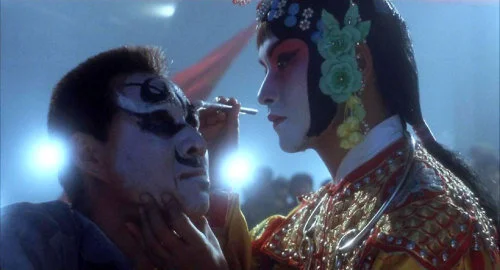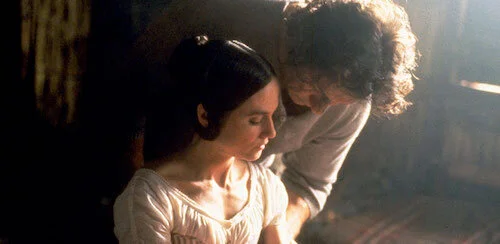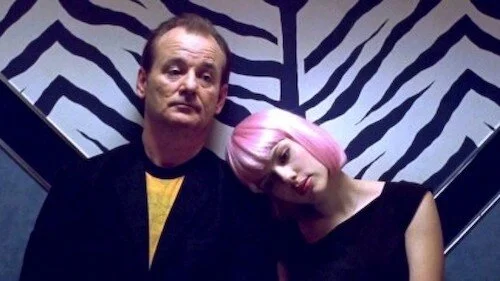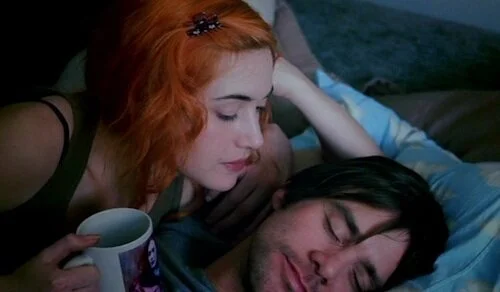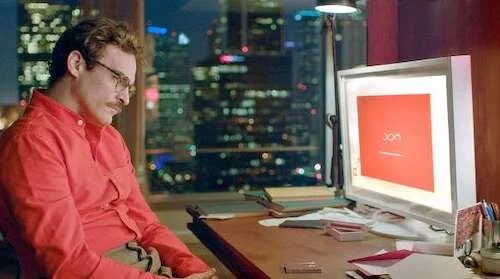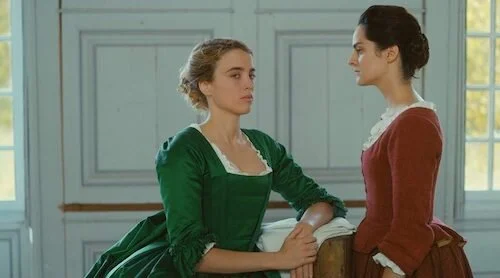A Basic Look at the Evolution of Love in Film: Part II
We continue yesterday’s exercise on briskly zipping through film history to try and find some interesting turning points on how love was depicted on screen, to celebrate Valentine’s Day weekend. Let us continue right away.
Bonnie and Clyde (1967)
With the ushering in of the New Hollywood movement comes a change on tired tropes. This includes romance. Bonnie and Clyde starts off guns blazing, with uncomfortable innuendos and a sexual tension that can be cut with a knife. As the film progresses, and we begin to sense Clyde’s sexual reservations, it’s almost more daring than providing a closure that fed into audience desires (especially in a society that was bereft of any form of daring content for decades, thanks to the Hollywood Code). One of many films to tackle love in a more challenged sense around this time (also see the grooming in The Graduate and the intolerance found in Guess Who’s Coming to Dinner for more), Bonnie and Clyde an obvious example that remains much more complex than its exterior suggests.
Ali: Fear Eats the Soul (1974)
Even though I brought up Guess Who’s Coming to Dinner in the previous entry, I feel that this kind of topic was dealt with the best in Rainer Werner Fassbinder’s Ali: Fear Eats the Soul. After all, Fassbinder dealt with the brunt end of societal intolerance with his own real life relationships (including with Ali star El Hedi ben Salem). An older single mother pairing up with a decades-younger immigrant, much to the chagrin of the town, is the kind of shift that cinema was experiencing once the entire world was on board with the whole progression thing. The challenges this couple faces in their perfect relationship, thanks to a world that hates the idea of their joy, is what makes Ali so difficult to watch. It’s the souring of a beautiful partnership.
Annie Hall (1977)
It’s easy to see how Annie Hall was monumental for all rom-coms ever since, particularly because of the meta approach to love and hardships. From a current perspective looking back, we’re essentially trying to figure out where it went all wrong. Memories are slapped together in no particular order, like a frantic mind still hurting (along with the heart). Hilarious on the outside, and depressing on the inside, Annie Hall was that kind of emotional ambiguity that on screen love desperately needed in the mid ‘70s.
My Beautiful Laundrette (1985)
There have been LGBTQ films before 85’s My Beautiful Laundrette, but it was around this time that the film industry was beginning to accept queer romances on screen on a mainstream level (despite various hold backs, including being told by cis or straight filmmakers). What sets My Beautiful Laundrette apart from other works at this time is the resilience against many clichés (the lead romance having to be stopped via death or some other forced trope, for instance). Love is love, and it should all be understood as a natural phenomenon.
When Harry Met Sally… (1989)
Rob Reiner’s 89 cult hit ended up being one of the most identifiable shifts away from the earlier ‘80s works of filmmakers like John Hughes. When Harry Met Sally… still feels channeled to this day, as it was one of a few films to welcome this new wave of rom-coms that had a very specific tone to them: quirky, raunchy, silly, and passionate. Cut from a similar cloth that the early screwball romantic comedies were made from, films like When Harry Met Sally… ditched the majority of the chaos, but retained all of the awkwardness that renders us human.
The Piano (1993)
I don’t think Jane Campion’s The Piano is celebrated enough for its shattering-of-boundaries in the romance department (while it is still heralded for its performances and historical accuracies). Here is a twisted relationship created from a feminist perspective, so even the happiest moments of Ada’s life shown here are tainted by some form of patriarchal stranglehold and fetishization. The Piano is easier to understand on a symbolic level, where Ada appreciates being treated like a human (even if it’s by someone that previously hard zero regard for her consent a day before). It’s a more difficult take on love that is handled extremely well.
Farewell My Concubine (1993)
What helps make Farewell My Concubine particularly special is its artistic approach to a forbidden romance (hell, even just the idea of a gay relationship in 20th century China). It was even banned upon release in China. For the entire three hours, two operatic actors from Peking are pitted against each other, and set to perform the same act for their entire lives (with Dieyi performing as the female role, as was customary). Not-so-subtly about gender identity and the desire for a queer romance, Farewell My Concubine toys with disapproved love the entire time, like a waltz that never ends. Unfortunately, lead actor Leslie Cheung committed suicide in 2003, after facing years of backlash for his bisexuality; his legacy in queer Chinese works will forever be groundbreaking and essential to the bigger picture of love on screen.
In the Mood for Love (2000)
It’s almost impossible to not include a Wong Kar-wai film on this list, since he aims to reinvent love in every single film of his. His greatest success is the highly acclaimed In the Mood for Love, perhaps the greatest depiction of love in the 21st century thus far. Two spouses that are currently cheated on by their respective partners team up to console one another. Their curiosity of where it all went wrong leads them to enact how they think their lovers approached one another; this then sends the two leads into a downward spiral of falling in love themselves. The trickery of each scene — not knowing what is real or acted out the first watch — is astonishing in its own right. The replay-able nature of In the Mood for Love renders it an endless nightmare of adoration that just can’t be.
Lost in Translation (2003)
Pitting two lost souls together in a foreign land (Japan) is a recipe for existential bliss, which Sofia Coppola conjured up while lost in Tokyo listening to My Bloody Valentine’s Loveless on her iPod. That fleeting sensation is captured perfectly here, between a has-been actor and a neglected girlfriend, both stuck in a hotel bar in the wee hours of the morning. Nothing about Lost in Translation is bombastic, ambitious, or extreme. It is all sublime, serene, and dreamlike. Sometimes, that’s just how love of any sort is. Not every relationship is explosive. Sometimes, they just chemically happen, and the world grows a little bit sweeter for it.
Eternal Sunshine of the Spotless Mind (2004)
It’s also impossible to forget about Charlie Kaufman, who overthinks love more than anybody in film ever has. It also results in some of the most imaginative romances ever shown in cinema. Case in point: Eternal Sunshine, and its backwards chronological take on a failed relationship turned into a meta exercise. Joel goes through with the erasure of his own mind, and thus relives his relationship with Clementine from end-to-start order. He is quickly reminded of why he hates her, but then is slowly forced to remember when things were much more magical. The film ends on a “what if?”, as sometimes we need to dive in and accept that love may not work out. As long as both parties aren’t toxic or abusive, and are willing to give a destroyed love another shot, we just have to see where it goes from here.
Her (2013)
Taking a page from collaborator Charlie Kaufman’s book on love, Spike Jonze gave the whole abstract-amour concept a try with his hyper current film Her. Sure. Chastise a film about a society that falls in love with their operating systems as much as you want. You’re missing a brilliant film. In a civilization where isolation dictates all, it makes sense that a culture with technology at their fingertips (which is fine tuned to their own personal preferences, mind you) is bound to turn in on itself in such a way. Her is much more devastating than it seems on paper, with human connectivity next door, but the self satisfaction of technological love being much more accessible (and less frightening). When technology advances at too rapid of a pace, love no longer makes sense, even in this bizarre context. I have a feeling Her will be studied on this level for many years to come.
Moonlight (2016)
One of Wong Kar-wai’s best students is Barry Jenkins, who channelled many of his works (particularly Happy Together and In the Mood for Love) in his 2010’s opus Moonlight. Barely any love — platonic or romantic — is given to Chiron here, and any instance is brief. You cling onto these small moments throughout the film, up until the spine tingling final lines, where Chiron confesses that he felt forced to shut an entire world out from ever winning his heart over ever again. Jenkins speaks for an entire community that isn’t represented in film enough (LGBTQ African Americans), especially in the mainstream (while great examples like Cheryl Dunye’s The Watermelon Woman and Isaac Julien’s Looking for Langston are thankfully getting recognized currently).
Portrait of a Lady on Fire (2019)
We end off on last year’s Portrait of a Lady on Fire, a present take on feminist gay love in a breathtaking end result. With Céline Sciamma filming her ex partner Adèle Haenel, Portrait becomes a test of loving someone you cannot be with; this is cleverly done in a way that resembles a painter and her subject’s forbidden love in 18th century France. Much of the film is spent questioning what is going to happen, with all of the time in the world being sucked away from two lovers. Once it is too late, what the world thinks no longer applies, but what can be done now? Cinema still has room for even more voices of untold stories, but Portrait of a Lady on Fire is one extra step in the right direction.
Andreas Babiolakis has a Masters degree in Film and Photography Preservation and Collections Management from Ryerson University, as well as a Bachelors degree in Cinema Studies from York University. His favourite times of year are the Criterion Collection flash sales and the annual Toronto International Film Festival.

